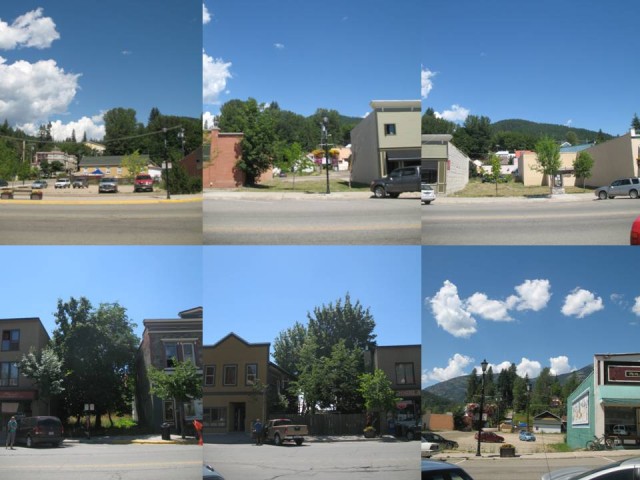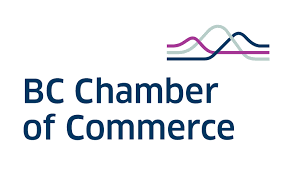Lots of lots : Is a tax break on development the key to revitalizing Rossland?
The market for building space and property, particularly downtown, hasn’t seen much demand in recent years. Some feel there is a Catch 22 holding back growth or renovations. In an effort to promote development in Rossland, City staff have been working on the beginnings of a new bylaw designed to jump start the process.
Arguably, the case could be made that more attractive and fixed up properties attract more tenants. At the very least, a fixed up and restored building adds to the beauty of the overall streetscape and helps promote the town. So what might be holding back some building owners from upgrading or expanding their facilities?
City Hall has heard from several businesses that they’d like to fix up their buildings but (and here’s where the Catch 22 comes in), improving building facades and overall upgrades while increasing the beauty of the streetscape, raises the assessments on the buildings thus property taxes. Those property taxes are then handed down to the tenants in the form of increased rents, which leads to more empty store fronts and empty buildings. This results in less revenue to pay the now significantly-raised property taxes. Some building owners see that cycle as a dis-incentive to improve or expand their properties. There is a potential solution out there available to cities under the Community Charter and this is what City staff are currently exploring. The tool is a revitalization tax exemption (RTE). These programs are designed to give BC municipalities the authority to exempt properties from municipal property value taxes for the purpose of encouraging and supporting the revitalization of communities. The program, initially launched in 2003, went through an overhaul in 2007, providing significantly-expanded possibilities to municipalities. Typically, the city sets a minimum property improvement value ($10,000 is currently the lowest in Parksville and $10 million, in Surrey’s city centre, is the highest) generally falling in the $20,000 to $50,000 range. The program then provides a five year tax holiday on the assessed value of the improvements with the option of an extended additional five year term to be followed by a three year ramping back up of taxes. An important point to note is that this program does not exempt property owners from paying utility taxes, development cost charges or school, police, hospital and regional taxes. Rather, it gives them a break on property taxes for the increased assessment. While the program has been popular in BC, Rossland would be one of only a few cities with a population of less than 10,000 population to participate. Current participants include:
- City of Surrey
- City of Langford
- District of Maple Ridge
- Town of Ladysmith
- District of Sooke
- City of Kamloops
- City of Kelowna
- City of Abbotsfor
- City of Chilliwack
- City of Parksville
- City of Victoria
- District of Chetwynd
- City of Salmon Arm
- District of Sparwood
- City of Williams Lake
- City of Merritt
- City of Langley
- District of Mission
- City of Terrace
- City of Port Alberni
- City of Quesnel
- City of Penticton
- City of Campbell River
Generally, the program is used to target specific desirable growth rather than growth in general. For example, three of the programs (Langford, Chetwynd, Sparwood) focus specifically on hotel developments; one (Quesnel) focuses on industrial. Penticton’s program targets downtown commercial, hotels and industrial developments. A few of the programs (Maple Ridge, Campbell River, Sooke, Victoria) target “green initiatives”, while one of the programs (Kelowna) aims to promote affordable housing. This past Monday, council debated a revitalization tax exemption bylaw put forward by City staff. That proposed bylaw, recommended by the CAO, had a broad target of attracting investment in properties classified as industrial, light industrial, commercial and recreational of a value greater than $10,000 (matching the lowest allowable limit currently in place in BC) located anywhere within city limits. The broadness of scope in the proposed bylaw was a sticking point for some councillors, who generally agreed the bylaw was good in intent but needed work on the specifics. “I like the spirit of the bylaw,” commented Councillor Andy Stradling. “I’m in support of any bylaw this council can pass that might move the city in the direction of the SSP and the OCP, particularly with regard to densification and reducing urban sprawl… I’m not very comfortable with the boundaries of the exemption which include Red Mountain and Redstone as part of the revitalization. I don’t think Redstone or the Ski Hill need revitalization. The classes include commercial, industrial and recreational. I’m in favour of the first two. I will be voting against this motion.” Councillor Laurie Charlton agreed with the need for more geographic focus, noting that the current bylaw, in his opinion, would do everything but revitalize Rossland. “I can have sympathy for trying to focus on the downtown area, but I agree with Councillor Stradling. If we apply this to anywhere, all we’re doing is sending an invitation to developers to suck the life out of the downtown area. That certainly isn’t what we want to achieve.” In Prince George, city government has just completed the first five years of a similar program and have undergone a review prior to moving into the second phase. In Prince George’s case the program is strictly limited to the downtown core and used it as one of a whole host of tools to inject more investment and life into the city. “We’ve seen a number of new developments through this program,” commented Prince George municipal planner Dan Milburn. “We have seen on one of our most challenged retail strips gain a number of redevelopments with the Ramada, the Keg, Tony Roma’s and Ric’s grill redeveloping. We also redeveloped the front of City Hall and a park area through the program. So as part of our overall marketing package, of which the RTE is one part, it seems to be working.” Prince George’s municipal planner noted that, indeed, he saw the program as a great success in his city but cautioned that the tax exemption is just one part of what needs to be a greater plan for the city, that the exemption area should be targeted to a specific location with specific goals and that before initiating any plan extensive planning and community consultation should be undertaken. “I would say that it’s very important to do your homework in terms of research and market conditions and do some scenarios on the benefit that it could potentially create first,” added Milburn. “Also it is very important to consult with the communities about their priorities for city revitalization, what types of development the city wants to see and where before you begin. It’s critical to make sure that is clear to the public before you get started.” The result of council’s discussion Monday night was ultimately a referral back to City staff to address concerns and come back with a re-draft of the policy. The general feeling around the table, however, was that the intent behind the proposed bylaw was good. Moving forward a re-drafted version of the bylaw should come back before council sometime later this year. Do you agree with enacting a tax exemption bylaw in Rossland? If so should it be targeted to a specific location or towards a specific type of desired development?


























